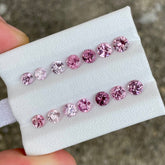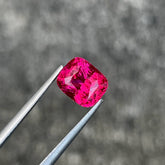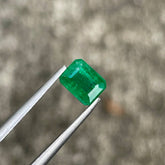Free Shipping on order over $80
100% Authentic & Certified
Crypto payment option now live
Save Big in 2025
Book your appointment
Product Title: Lustrous Topaz on Cleavelandite with Tourmaline Crystals from Pakistan
Make an Offer
Product Title: Lustrous Topaz on Cleavelandite with Tourmaline Crystals from Pakistan
Request Price
Product Title: Lustrous Topaz on Cleavelandite with Tourmaline Crystals from Pakistan
Lustrous Topaz on Cleavelandite with Tourmaline Crystals from Pakistan
- $550.00
- $550.00
- Unit price
- / per
Couldn't load pickup availability
Guaranteed Free Shipping
Free standard shipping on orders over $80
Free Express shipping on orders over $250
14-Days Returns policy
Express Shipping Takes 5 - 8 Days. Economy Shipping takes 15 - 25 Days
Product Information:
| Specimen Name | Topaz on Cleavelandite with Tourmaline |
|---|---|
| Weight | 197 grams |
| Dimensions | H: 5.5 x W: 7 x D: 6.5 cm |
| Treatment | None |
| Origin | Chapu Mine, Skardu District, Gilgit Baltistan, Pakistan |
Description:
Topaz is a tremendous blue-colored, semi-precious gemstone from the Topaz mineral family. The name Topaz comes from the Sanskrit word "tapas," meaning fire. Topaz occurs in various colors: red, pink, purple, yellow, orange, brown, blue, green, and colorless. Topaz is a jeweler's favorite and is used in jewelry: rings, earrings, necklaces, pendants, and bracelets because of its various colors. Topaz is a symbol of passion and affection and has been said to help one's sweetness and disposition. Well-known topaz deposits are located in Afghanistan, Brazil, China, Myanmar, Pakistan, Russia, Sri Lanka, and the USA.
Topaz Mineral Associations:
| Chakras | Sacral Chakra, Solar Plexus Chakra |
|---|---|
| Birthstone | November |
| Zodiac | Leo, Scorpio, Sagittarius |
| Anniversary | 4th, 19th |
| Hardness | 8 |
| Color | Colorless, blue, brown, orange, grey, yellow, green, red-pink |
Healing Properties of Topaz Mineral:
Attraction, Communication, Forgiveness, Good health, and fortune, Joy, Love, Motivation, Problem-solving
- Topaz helps in redirecting energies within the body where it is needed the most.
- Topaz releases tension and brings relaxation, joy, generosity, and good health.
- Topaz stabilizes the emotions, making you open to love.
- Topaz encourages openness honesty, self-control, and self-realization.
- Topaz helps in generating problem-solving ideas.
- Topaz combats eating disorders and aids in digestion, such as anorexia and bulimia.
- Astrologists recommend Topaz to gain financial stability, fame, self-confidence, and good health.
Pakistan, nestled in the heart of South Asia, has long been a treasure trove of gemstones and minerals. Among its many geological wonders, the combination of Lustrous Topaz on Cleavelandite with Tourmaline Crystals is a true marvel. This exquisite specimen, sourced from the Gandhara Gems region, showcases nature's artistic craftsmanship. In this article, we will explore the geological background, the significance of Gandhara Gems, the formation process, and the mesmerizing characteristics of this unique mineral composition.
The Legacy of Gandhara Gems
Gandhara Gems is a name that echoes through the annals of gemstone history. It refers to a region in northern Pakistan known for producing some of the world's most sought-after gemstones. Situated at the crossroads of Asia, Gandhara has been a gemological crossroads itself, where trade routes from China, India, and Central Asia converged. The region has been synonymous with exceptional gem quality and is renowned for hosting various gemstones, including topaz, tourmaline, and cleavelandite.
Geological Background
To understand the beauty of the Lustrous Topaz on Cleavelandite with Tourmaline Crystals, one must first delve into the geological history of the region. Pakistan's northwestern region is a treasure trove of geological diversity, with a history that spans millions of years.
The Birth of the Himalayas
The formation of the Himalayan mountain range, a relatively recent geological event, played a crucial role in the creation of these exquisite specimens. About 50 million years ago, the Indian Plate collided with the Eurasian Plate, causing immense tectonic forces to create the towering Himalayas. This collision led to the upheaval of ancient rocks, pushing minerals like topaz, cleavelandite, and tourmaline closer to the Earth's surface.
Mineral Formation in Gandhara Gems
The region of Gandhara Gems, located within the boundaries of the Himalayan mountain range, boasts a complex geological history. The combination of Lustrous Topaz on Cleavelandite with Tourmaline Crystals owes its existence to this intricate history.
Topaz, a silicate mineral, was formed deep within the Earth's crust under high pressure and temperature conditions. Over time, tectonic forces, coupled with erosion and weathering, brought these topaz crystals closer to the surface. As they rose, they interacted with other minerals, giving birth to the stunning cleavelandite and tourmaline crystals.
The Role of Hydrothermal Activity
Hydrothermal activity played a significant role in shaping these gemstones. The rise of hot, mineral-rich fluids from deep within the Earth's crust allowed for the growth of cleavelandite and tourmaline crystals. These minerals precipitated out of the hydrothermal solutions, forming the distinctive associations that we see in specimens from Gandhara Gems.
The Magic of Lustrous Topaz
Characteristics of Topaz
Topaz, the primary gem in this mineral composition, is a mineral that exhibits a range of colors, from colorless to various shades of blue, yellow, and pink. The topaz found in Gandhara Gems often displays a lustrous golden hue, which is prized for its beauty and rarity. Its exceptional hardness, ranking 8 on the Mohs scale, makes it ideal for use in jewelry.
The Lure of Golden Topaz
The golden topaz from Gandhara Gems is particularly captivating due to its intense color saturation and transparency. The term "lustrous" in the mineral's name emphasizes its brilliant sheen, which is further accentuated by the clarity of the crystals. When properly cut and faceted, these topaz gemstones become prized centerpieces in high-quality jewelry pieces.
Healing and Metaphysical Properties
Beyond their aesthetic appeal, topaz crystals have long been associated with healing and metaphysical properties. In various cultures, topaz is believed to promote emotional balance, and spiritual growth, and even protect against negative energies. Such beliefs have elevated the allure of Gandhara Gems' golden topaz in the world of gemstone enthusiasts.
The Allure of Cleavelandite
The Uniqueness of Cleavelandite
Cleavelandite is a mineral that belongs to the feldspar group and is often found associated with topaz in the Gandhara Gems region. What sets cleavelandite apart is its distinctive bladed or tabular crystal habit, which often forms beautiful radial clusters.
The Luminous White Beauty
Cleavelandite is typically milky white, and its pristine color and striking crystal formations contrast beautifully with the golden topaz. This mineral's name pays homage to the American mineralogist and chemist, Parker Cleaveland, who made significant contributions to the study of minerals in the early 19th century.
Cleavelandite in Jewelry
Although cleavelandite is not as well-known as topaz, its unique appearance has made it a favorite among mineral and gemstone collectors. Some artisans even incorporate cleavelandite into jewelry designs, taking advantage of its striking appearance to create one-of-a-kind pieces that showcase the mineral's beauty.
Tourmaline Crystals: Nature's Palette
The Rainbow of Tourmaline
Tourmaline, another key component of this mineral composition, is celebrated for its incredible range of colors. These tourmaline crystals from Gandhara Gems exhibit colors that span the entire spectrum, from deep black to vibrant pink, green, and blue. The availability of such a wide array of colors makes Tourmaline a versatile and prized gemstone.
The Role of Iron and Manganese
The remarkable color variations in tourmaline are attributed to the presence of iron and manganese ions in its crystal structure. Depending on the specific elements and their arrangement, tourmaline crystals can display a single color, a bi-color or multi-color combination, or even a watermelon-like appearance with a green rind and a pink core.
Unique Tourmaline Varieties
Among the tourmaline varieties found in the Gandhara Gems region, the most famous are the pink and green varieties. Pink tourmaline, also known as rubellite, is cherished for its romantic hue, while green tourmaline, often referred to as verdelite, captivates with its lush, natural shades.
The Formation Process Unveiled
A Harmonious Assembly
The formation of Lustrous Topaz on Cleavelandite with Tourmaline Crystals is a testament to the harmonious assembly of diverse mineral components. Each mineral's unique characteristics, including its color, hardness, and crystal structure, have contributed to the creation of this stunning combination.
Early Stages of Formation
The journey of this mineral composition begins deep within the Earth, where topaz crystals take shape under extreme pressure and temperature conditions. Over millions of years, tectonic forces slowly push these crystals closer to the surface. As they ascend, they encounter hydrothermal solutions that deposit cleavelandite and tourmaline crystals upon them.
Hydrothermal Alchemy
The role of hydrothermal activity in this mineral's formation cannot be overstated. These hot, mineral-laden fluids rise from the Earth's depths and interact with the existing minerals. In this process, the hydrothermal solutions dissolve and transport various elements, which are later precipitated as cleavelandite and tourmaline crystals on the golden topaz.
The Art of Mineral Association
The artistry of this mineral composition lies in the way these minerals come together. Cleavelandite, with its tabular crystals, forms radiant clusters that provide an elegant backdrop for the lustrous topaz. Meanwhile, tourmaline crystals, with their striking colors, add a vivid and contrasting dimension to the ensemble.
The Significance of Gandhara Gems
A Legacy of Excellence
Gandhara Gems has earned its reputation as a gemological treasure trove. It has been a source of exceptional gemstones for centuries, with a legacy that extends to ancient civilizations. The historical significance of the region and its gems is intertwined with the cultural heritage of South Asia.
Ancient Associations
The name "Gandhara" itself has ancient roots, tracing back to the historical Gandhara Kingdom, which encompassed parts of modern-day Pakistan and Afghanistan. This region was known for its rich mineral resources, and its gems were highly prized by ancient civilizations, including the Greeks and the Mauryan Empire of India.
The Modern Hub
Today, Gandhara Gems continues to be a hub for gemstone enthusiasts, collectors, and jewelry makers. Gem traders and lapidaries from around the world are drawn to the region's offerings, with a keen eye on the unique mineral compositions that emerge from its depths.
The Appeal to Collectors and Enthusiasts
A Treasure for Mineral Collectors
Mineral collectors are drawn to specimens like Lustrous Topaz on Cleavelandite with Tourmaline Crystals from Gandhara Gems for their rarity and aesthetic appeal. The unique combination of minerals, their impeccable crystal formations, and vibrant colors make these specimens highly sought after.
A Gemstone Enthusiast's Delight
For gemstone enthusiasts, these specimens offer a rare opportunity to own and appreciate the beauty of topaz, cleavelandite, and tourmaline all in one piece. The interplay of colors, the exquisite crystal formations, and the region's historical significance add an extra layer of allure.
The Art of Jewelry Making
Jewelry designers and artisans also find inspiration in these mineral compositions. The vivid colors of tourmaline, the luster of topaz, and the unique character of cleavelandite can be incorporated into stunning jewelry pieces, ensuring that the beauty of Gandhara Gems continues to captivate hearts and minds.
The Ethical Sourcing of Gandhara Gems
Sustainable Practices
In recent years, there has been a growing emphasis on ethical sourcing and sustainable practices within the gemstone industry. In the context of Gandhara Gems, ethical sourcing is of paramount importance to ensure the preservation of the region's mineral wealth.
Responsible Mining
Responsible mining practices prioritize the welfare of local communities and the protection of the environment. Sustainable extraction methods are vital to mitigate the ecological impact of mining in the sensitive Himalayan ecosystem.
Community Development
Many organizations and businesses working in the Gandhara Gems region have initiated community development projects to improve the living conditions of the local population. These projects focus on education, healthcare, and infrastructure development, ensuring that the benefits of the gemstone trade are shared with the community.
Lustrous Topaz on Cleavelandite with Tourmaline Crystals from Pakistan
Lustrous Topaz on Cleavelandite with Tourmaline Crystals from Pakistan's Gandhara Gems region is a remarkable example of nature's artistry and the geological history of the Himalayas. The harmonious assembly of topaz, cleavelandite, and tourmaline, brought together through millions of years of geological processes, creates a mineral composition that continues to captivate mineral collectors, gemstone enthusiasts, and jewelry artisans alike.
The legacy of Gandhara Gems, deeply rooted in history, adds a layer of significance to these specimens. This region, with its rich mineral resources, continues to be a source of inspiration for the gemstone industry and a symbol of the natural wonders that our planet offers.
As we appreciate the beauty of Lustrous Topaz on Cleavelandite with Tourmaline Crystals, we must also embrace the importance of ethical sourcing and sustainable practices to ensure the continued availability of these exquisite gems while safeguarding the well-being of the local communities and the environment in the Gandhara Gems region.
Returns Policy
You may return most new, unopened items within 30 days of delivery for a full refund. We'll also pay the return shipping costs if the return is a result of our error (you received an incorrect or defective item, etc.).
You should expect to receive your refund within four weeks of giving your package to the return shipper, however, in many cases you will receive a refund more quickly. This time period includes the transit time for us to receive your return from the shipper (5 to 10 business days), the time it takes us to process your return once we receive it (3 to 5 business days), and the time it takes your bank to process our refund request (5 to 10 business days).
If you need to return an item, simply login to your account, view the order using the "Complete Orders" link under the My Account menu and click the Return Item(s) button. We'll notify you via e-mail of your refund once we've received and processed the returned item.
Shipping
We can ship to virtually any address in the world. Note that there are restrictions on some products, and some products cannot be shipped to international destinations.
When you place an order, we will estimate shipping and delivery dates for you based on the availability of your items and the shipping options you choose. Depending on the shipping provider you choose, shipping date estimates may appear on the shipping quotes page.
Please also note that the shipping rates for many items we sell are weight-based. The weight of any such item can be found on its detail page. To reflect the policies of the shipping companies we use, all weights will be rounded up to the next full pound.

Recommended Products
- $550.00
- $550.00
- Unit price
- / per
- $550.00
- $550.00
- Unit price
- / per
- $550.00
- $550.00
- Unit price
- / per
- $550.00
- $550.00
- Unit price
- / per
- Choosing a selection results in a full page refresh.







